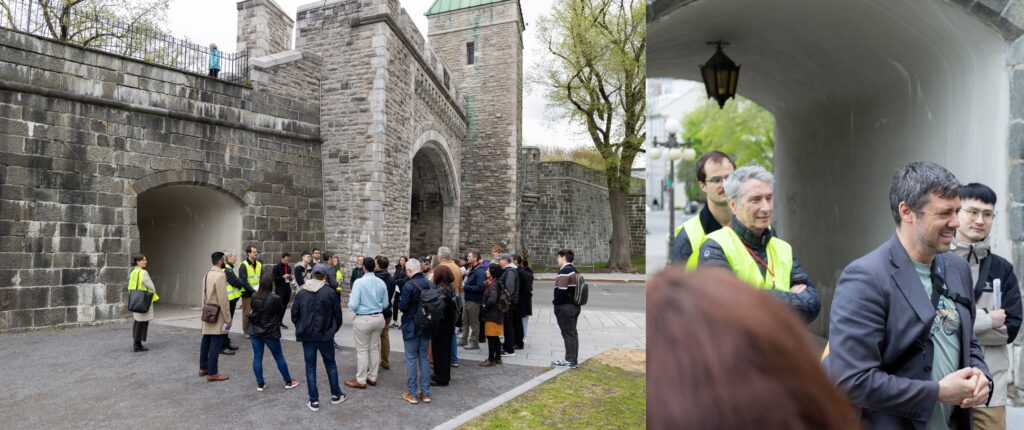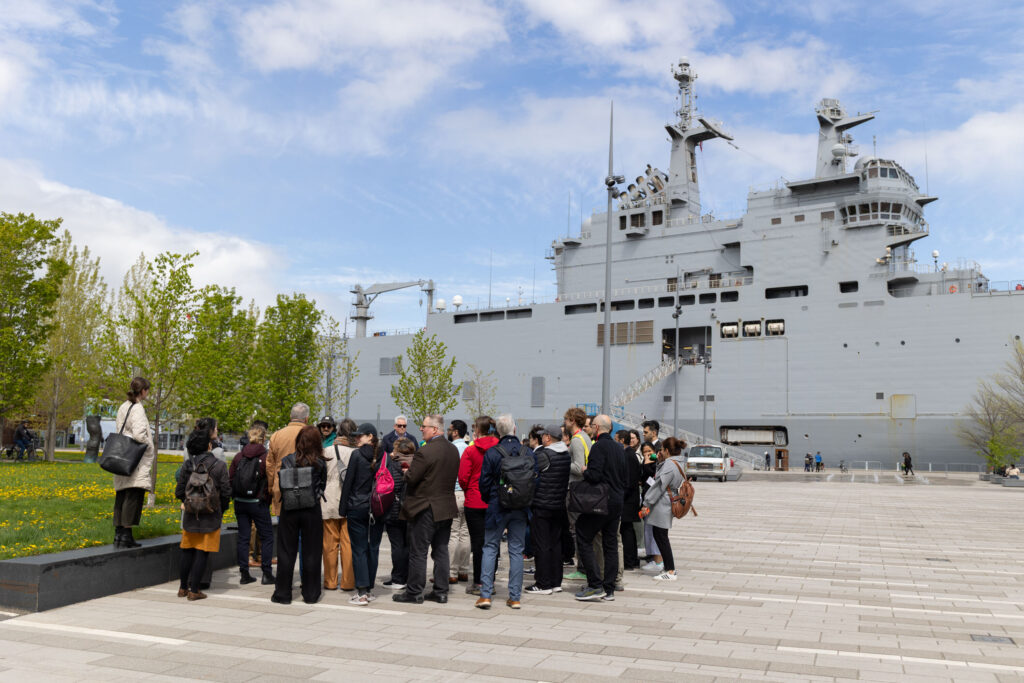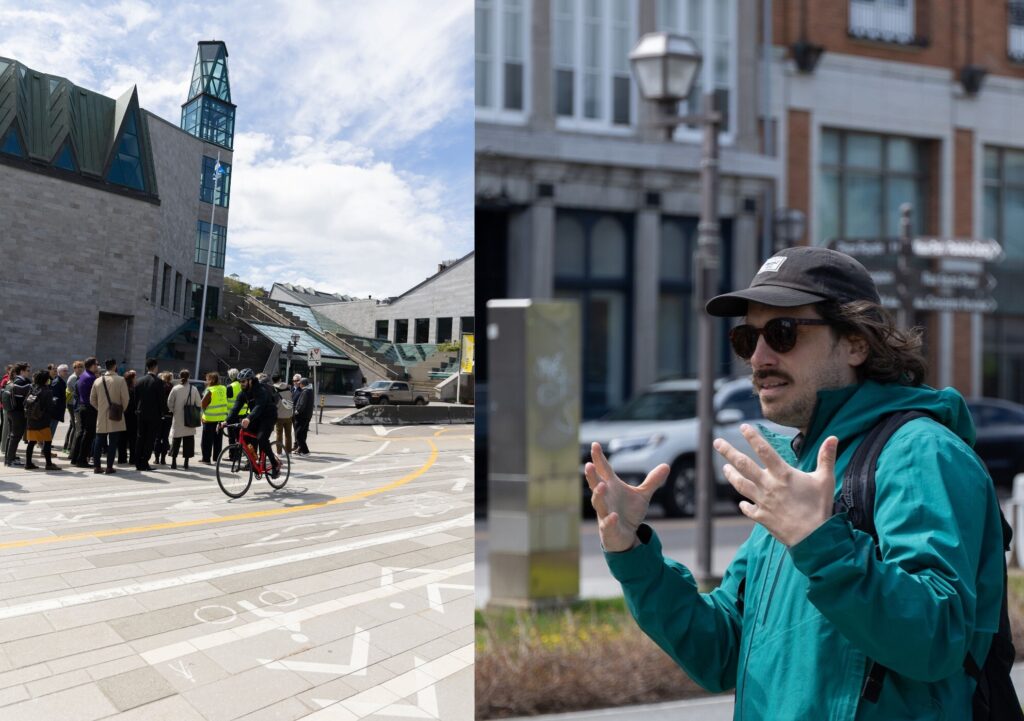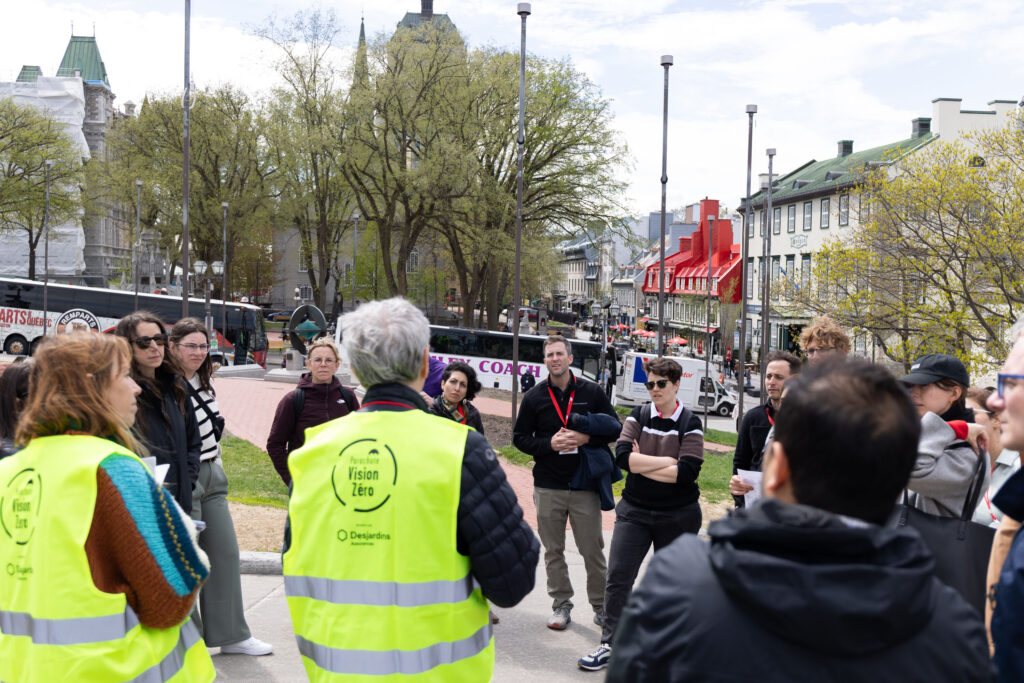Parachute and the Canadian Association of Road Safety Professionals (CARSP), along with staff from the City of Québec, organized a Vision Zero Walkshop that took place on May 21, 2025.
The event, attended by 40 delegates from the 2025 CARSP Conference held in Québec, kicked off at the Québec City Convention Centre with a welcome from Valerie Smith, Parachute’s Director of Road Safety Programs who also served as CARSP President, and Hervé Chapon, Coordonnateur de la Stratégie de sécurité routière, Ville de Québec.
The walkshop route

No. 1 – Pierre-Luc Lachance, Executive Committee member, Québec City

Pierre-Luc Lachance, a Québec city councillor who is part of that council’s 10-member executive committee, met walkshop attendees at the corner of Saint-Louis and Auteuil streets, one of the gates into the old walled city of Québec. He presented on the Zero Emission Zone project that, from June to September in 2025, transformed two areas in Old Quebec into pedestrian zones to reduce traffic congestion and improve the quality of life in the historic district. Traffic is closed to motorized traffic, except residents, every day between 11 a.m. and midnight. City officials worked closely with local businesses, including inns and hotels, within the zones to manage their customer needs within the zone restrictions.
No. 2 – Sophie Tremblay-Gratton, landscape architect and consultant

The next stop was Québec’s City Hall, where landscape architect Sophie Tremblay-Gratton turned the group’s attention to la place de l’Hôtel-de-Ville, the square across the street. It was rebuilt in 2023 by the city to more than triple its previous size. Sidewalk width on the surrounding streets increased from two to four metres to improve accessibility for pedestrians and those using wheelchairs. The rebuild was done using a floating structure set on foundational piles to protect root systems and preserve existing trees; more landscaping and new lighting showcases the square’s iconic location. Roadways surrounding the square were also redesigned with accessibility in mind.

No. 3 – Jérôme Nadeau, engineer, Quebec City

Participants stopped along the VivaCité bike corridor at Place des Cantonniers and Dalhousie Street to learn about the implementation of cycling infrastructure at a location that faced road safety issues related to the co-existence – and potential conflicts – of various users, including cyclists, pedestrians, motorists, tourists and dock-related activities. As an example, engineer Jérôme Nadeau showed where the initial cycling route used to run alongside the dock, but the path was often blocked by passengers leaving and entering cruise ships; on this day, a large military ship was in dock. The bike lane was reconfigured to a route parallel to, but away from, the dock.

No. 4: Wrap-up discussion

The walkshop concluded with a discussion about the many challenges a city founded in 1608, built along a steep cliff, faces to create accessible spaces and to support pedestrian and cycling. Narrow sidewalks, buildings set very near streets, narrower streets, cobblestones, the steep pitches between the upper and lower towns – all are picturesque but challenge usual built-environment solutions to improve accessibility that can be put in place in less challenging settings.
Participant feedback and observations
In a post-event survey, 100 per cent of participants agreed that they would attend this type of event again, that they found it valuable to hear from local experts, and that they would recommend others attend a walkshop, as well. Ninety per cent of respondents said they learned new information, or significant new information, during the event and found the experience engaging, or very engaging.
Observations from the survey comments:
- It’s difficult to do everything at once, and perfectly. Through research, identify places that need improvement the most and are achieveable / practical to execute. Make sure though that project-based improvements are part of a larger vision and plan.
- Accessibility: although the streets were beautiful and well designed for people walking and on bikes it was apparent that accessibility was not factored in to many of the decisions around the built environment (noting this is a huge challenge for all neighbourhoods and not just specific to Québec City!)
- I liked hearing the city councillor discussing some of the barriers [to setting up pedestrian zones] and how they overcame them (e.g., valet service from faraway parking lots to accommodate hotel guests outside of the pedestrianized areas).
- The detailed explanation about the work done in the square in front of the City Hall, to make it more user friendly for pedestrians and wheelchair users.
- There were some areas with some really challenging grades, with significantly steep sections that suddenly appear and would be a hazard for most people, not just someone with accessibility challenges.
- The pedestrian signalling system at intersections was hard to interpret. I’d like to learn more about the reasoning behind it and if there have been studies about compliance with it.
